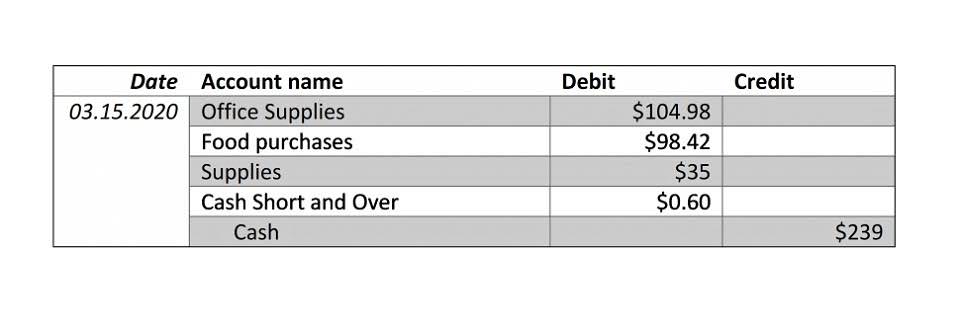Bookkeeping
What is an incremental cost?

Sensitivity analysis can further evaluate how changes in production impact costs, enabling data-driven decision-making. Understanding the concept of incremental manufacturing cost is essential for businesses aiming to optimize production efficiency and profitability. This financial metric helps companies determine the additional costs incurred when increasing production levels, providing insights into operational decision-making. Accurately calculating these costs supports pricing strategies, budgeting, and evaluating potential investments or expansions.
Importance of Calculating Incremental Cost
- If the price offered by the customer is at least this much, management should accept the order.
- Businesses must determine the exact volume at which they can get the greatest value.
- The components of incremental manufacturing cost typically include direct materials, direct labor, and variable overhead.
- It excludes fixed overhead costs that don’t fluctuate with short-term changes in output.
- From a financial perspective, incremental cost refers to the change in total cost resulting from a particular decision or activity.
- Incremental costs are also referred to as the differential costs and they may be the relevant costs for certain short run decisions involving two alternatives.
- A software development company is deciding whether to invest in upgrading their existing infrastructure.
Knowledge of incremental cost and incremental revenue will help you expand your business and make extra profit. For instance, if a manufacturing process uses a great deal of energy, then utility cost would be a variable cost. Fixed costs do not change when additional units are produced, so they should be excluded. Marginal cost is the change in total cost as a result of producing one additional unit of output.
- Activity-based costing (ABC) provides a clearer picture of product profitability and helps identify cost-saving opportunities.
- He writes about small business, finance and economics issues for publishers like Chron Small Business and Bizfluent.com.
- In this section, we will delve into the concept of incremental cost and its significance in decision making.
- They can include the price of crude oil, electricity, any essential raw material, etc.
- This concept is critical when businesses assess the financial viability of producing additional units.
Benefits to Incremental Cost Analysis

It can be of interest to determine the incremental change in cost in a number of situations. For example, the incremental cost of an employee’s termination includes the cost of additional benefits given to the person as a result of the termination, such as the cost of career counseling. Or, the incremental cost of shutting down a production line includes the costs to lay off employees, sell unnecessary equipment, and convert the facility to some other use. As a third example, the sale of a subsidiary includes the legal costs contra asset account of the sale. Incremental cost helps isolate the production costs directly tied to upsizing capacity or volumes.
Understanding Incremental Cost
It is a crucial metric for businesses to consider when evaluating the feasibility and profitability of various options. Businesses need to find out incremental costs to stay informed about the investment in producing extra units or providing services. It helps businesses to identify profits and losses, which is beneficial in financial management. A simple way of describing incremental cost is as the additional money a business must spend to produce one additional unit. It is essential for companies to calculate the average cost per unit of production in order to set prices at a level that covers costs and allows for profit. Understanding incremental costs is vital for businesses to determine the most cost-effective levels of production and to set appropriate pricing strategies.
Example of Incremental Cost
To increase production by one more unit, it may be required to incur capital expenditure, such as plant, machinery, and fixtures and fittings. A restaurant with a capacity of twenty-five people, as per local regulations, needs to incur construction costs to increase capacity for one additional person. Incremental costs are also referred to as marginal costs, but there are some basic differences between them. Thus, the above are some benefits that the procedure of marginal cost analysis contributes to the entire manufacturing process. To give you an idea of how knowing your incremental and marginal cost leads to better financial planning, let’s get back to the shirt business example.

By harnessing this power, we can navigate complex scenarios, allocate resources wisely, and shape a better future. Remember, sometimes the smallest adjustments yield the most significant impact. Firms often need to set special Restaurant Cash Flow Management prices for sales promotions or one-time orders.

In summary, incremental cost provides a lens through which we evaluate changes, weigh alternatives, and make informed decisions. Whether you’re a manager, investor, or student, mastering this concept enhances your ability to navigate complex scenarios. To calculate incremental cost, begin by reviewing the existing production cost records. The information is normally available on a firm’s income statement and balance sheet.
A Step-by-Step Guide to Calculating Incremental Costs

However, none of it will include the fixed costs since they will not change due to volume fluctuation. This concept of incremental cost of capital is useful while identifying costs that are to be minimized or controlled and also the level of production that can generate revenue more than return. The moment one extra unit produced does not generate the required return, the business needs to modify its production process. If you increase your output to 15,000 shirts at a incremental manufacturing cost total cost of $120,000, your incremental cost will be $20,000. This means the $20,000 additional cost will produce 5,000 extra units on your product line. Understanding a company’s incremental costs is important for decisions like setting pricing, production levels, make vs. buy, adding product features, and more.



Leave a reply